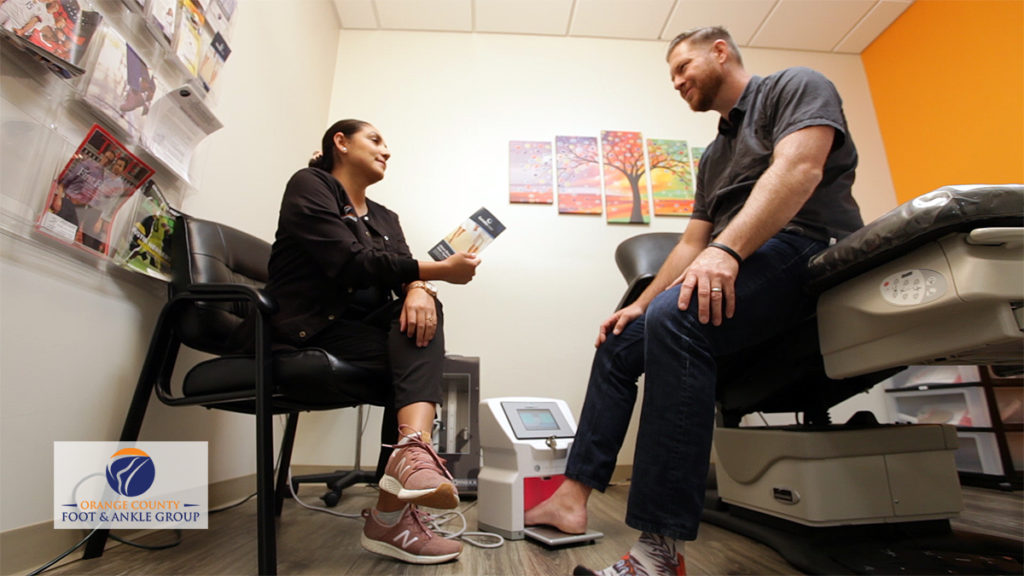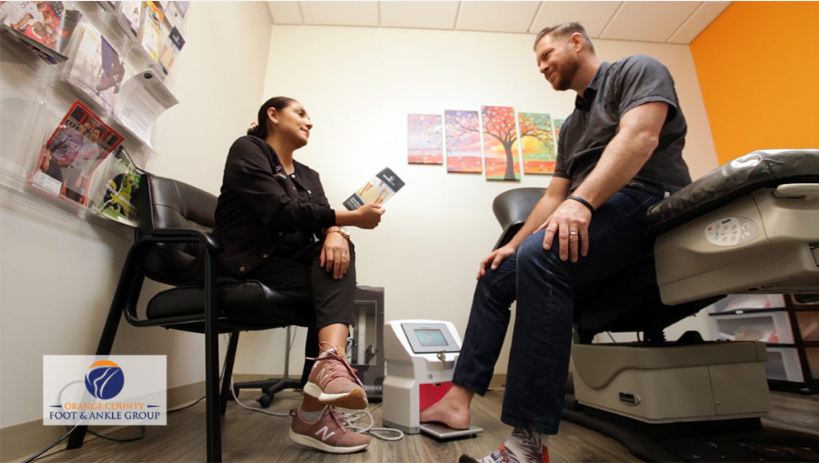Toenail fungus
Toenail fungus, also known as onychomycosis, is a terrible and dangerous disease of the toes. It refers to a group of infections of the toenails and in some cases the fingernails that can cause the nail to become discolored, thick, and more prone to cracking and breaking. The first visible signs of toenail fungus usually show as a white or yellow spot under the tip of your toenail and progresses to discoloration, thickening, and crumbling at the edges as the infection spreads.
Symptoms of toenail fungus
If one or more of your toes are thickened, have whitish to yellow-brown discoloration, are brittle, crumbly, or ragged, have a distorted shape, a dark color caused by debris building up under the nail, or have a foul odor, you may have toenail fungus.

Facts about toenail fungus
Here are some facts you need to know about toenail fungus:
- The older you are, the more likely you are to get it
While you are at risk to get infected with Toenail Fungus Laser at any age, your chances of contracting the infection increase with age. About 20% of the total population with toenail fungus is estimated to be over the age of 60, with 50% estimated to be over the age of 70.
There are a number of reasons why elderly people are affected by nail fungus more frequently. For example, toenail fungus thrives in warm and damp environments. Older people affected by nail fungus tend to have difficulty reaching their feet after bathing to dry them completely, providing more opportunities for the toenail fungus to take hold.
People who spend the majority of their day with their feet enclosed in warm, sweaty shoes, are also increasing their risk for nail fungus infection even further. Elderly patients are also more likely to have poor blood circulation in their feet, which makes it more difficult for their bodies to fight infections of all kinds, including fungal infections. Also, nails naturally thicken with age, making an infection more likely to take hold.
- Nail polish can predispose you to toenail fungus
Nail polish and other direct nail coverings can facilitate the trapping of moisture under the nail. This attracts toenail fungus! This does not rule out the use of toenail polish, but make sure your feet are completely dry before applying nail polish. If possible, allow your toes to breathe without the use of nail polish.
- An injury to your toenails could trigger a toenail fungal infection
If your toes are prone to injury or you're a runner whose toenails frequently turn black and fall off, you are at a higher risk to get toenail fungus. Any damage that separates the nail from the nail bed gives the toenail fungus a better chance of infiltrating. Even something as simple as a tight fitting shoe cramming your toes together or up against the front of your foot can be problematic.
- The sooner you seek treatment for your toenail fungus infection, the better.
If you have a fungal infection in your toenails, it will not go away on its own. The sooner you begin toenail fungus treatment to eradicate the infection , the more likely it will clear up and allow new and clear toenails to grow out. If the condition is severe, you should seek advanced podiatry services as soon as possible to get the diagnosis and the effectiveness you require.
- Laser treatment of toenail fungus effectively targets toenail fungal infections
Toenail fungus can be effectively treated with cold Laser Toenail Fungus Removal. The laser penetrates both the toenail and the soft tissue, killing the difficult to reach fungus while also encouraging new and healthy nail growth.
- An ingrown toenail could intensify toenail fungal infection
An ingrown toenail may appear to be a minor injury, but it is the type of condition that will fester and worsen over time if not treated properly. It can also cause an infection or even worsen an already existing toenail fungus.
Fiction about toenail fungus
Here are some untrue myths that you may have read about toenail fungus:
- Toenail fungus is due to poor hygiene
While it is true that hygiene is important, you could have the cleanest feet in the world and still be susceptible to toenail fungus. Not only is toenail fungus highly contagious, but there may also be other risk factors involved , such as nail bed damage or pre-existing conditions such as diabetes.
The risk of contracting toenail fungus from another person is especially high if you are in public areas , such as shared locker rooms, nail salons not use sterilized tools and properly sanitized foot baths, sharing personal items such as towels or flip-flops with someone, or other public areas with moist surfaces that are not cleaned regularly.
- Toenail fungus is gross looking, harmless, and will go away on its own
Failure to treat a toenail fungal infection will aggravate the problem, cause pain, or allow the infection to spread to other toes, as with athletes foot or ringworm. Furthermore, if your immune system is compromised for any reason, you leave yourself vulnerable to more serious and potentially life-threatening infections if you sit back and hope the toenail fungus infection will go away on its own.
- You don’t need to see a doctor for toenail fungus
Friends and family members may advise you to treat your toenail fungus at home with over-the-counter medications or home remedies to avoid trips to the doctor. While this may help in some cases, most toenail toenail fungus cases require a proper exam and diagnosis followed by specific toenail fungus treatments. The best step of action is to see a foot and ankle surgeon as soon as possible as their repertoire of advanced podiatry services allow the to officially confirm a fungal infection and provide proper treatment with proven products, medication, and other procedures such as laser treatment or even ingrown toenail surgery to treat your infection.
Want to learn more about how toenail fungus can be treated? Then Click here to learn how podiatrists leverage state of the art technology to successfully remove nail fungus infections once and for all.





Comments